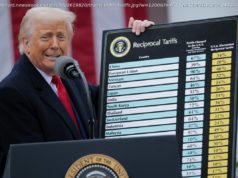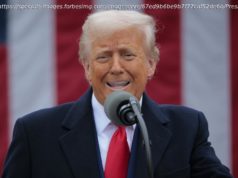Trump’s 25% tariffs on autos not made in the U.S. and certain auto parts will send ripple effects through an industry that is already being pummeled by steel and aluminum import duties and on-again, off-again 25% levies on Canada and Mexico.
President Donald Trump’s 25% tariffs on autos not made in the U.S. and certain auto parts are sending more tremors through an industry already being pummeled by steel and aluminum import duties and on-again, off-again 25% levies on Canada and Mexico. The new tariffs, announced Wednesday, are likely to jack up new vehicle prices and will also impact the used car market.
Trump has been itching to tax foreign autos for years. In his first term, he declared auto imports a threat to national security giving him the authority to impose tariffs on them.
It’s the latest in a number of auto industry maneuvers by Trump during his first weeks back in the White House. Auto companies are also navigating the reversal of fuel economy standards, dialed down greenhouse gas emission standards and a host of electric vehicle policy rollbacks.
Here’s what to know.
As automakers expanded globally, so too did their production, manufacturing and supply chains. Responding to the rapidly shifting U.S. trade policy has become complex and confusing.
It would be impossible for auto manufacturers to reroute the sourcing overnight of thousands of parts that are imported to the U.S., and uprooting their assembly operations would take years. The network of auto manufacturing and supply are planned and developed over a span of years, and the industry may suffer collateral damage in Trump’s escalating trade wars.
“It adds to the uncertainty facing all automakers as the industry’s supply chain is inherently global and has optimized around moving components across national borders where free trade agreements have existed in the past,” said John Paul MacDuffie, professor of management at the University of Pennsylvania.
That means auto companies are likely to feel pain from the tariffs at different levels, said Sam Fiorani, analyst at AutoForecast Solutions, which studies the industry.
“While European manufacturers chiefly deal in luxury vehicles and their buyers can afford some price adjustments, it’s the companies like Toyota, Mazda, and Subaru who import large percentages of their fleets that will take a beating,” Fiorani said.
Start
United States
USA — mix Trump’s latest auto tariffs explained: What car buyers should know this year






